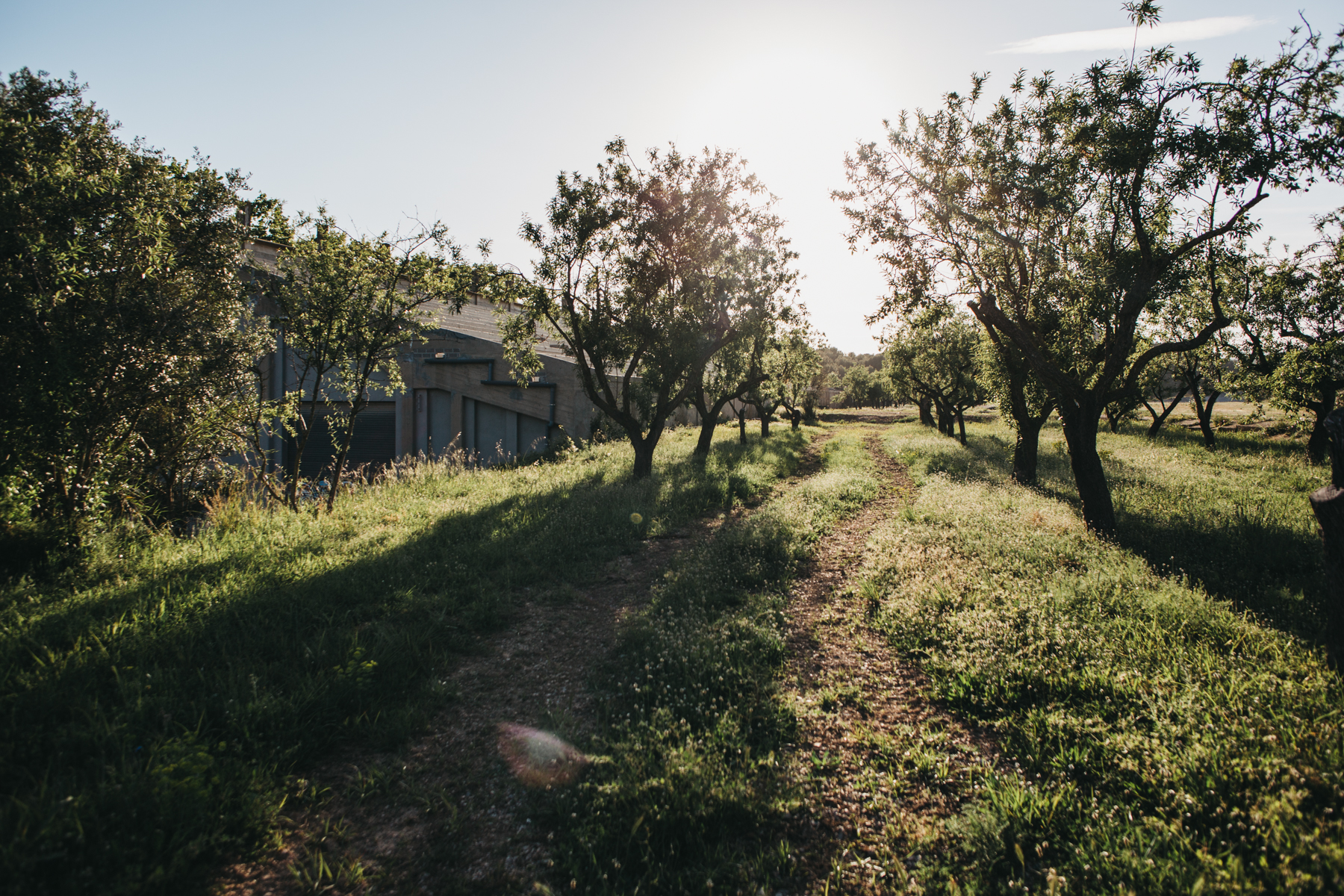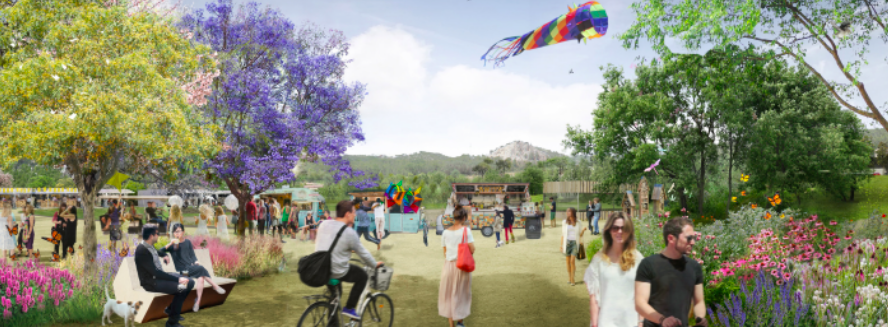One of the Autodrome Terramar’s main assets are its natural surroundings and preserving them forms part of our core values. As such, we want to share our vision for the environmental side of our project. It’s something we’re very passionate about, and it has been a key factor in everything we have done until now in restoring this cherished and iconic site.

Working Conscientiously
We’re very conscious that we’re working in an environment that needs to be treated with great respect. The Autodrome was here long before we were born, and obviously, so were the Garraf and the Riera de Ribes. This means that we need to focus not just on preserving the site’s natural heritage but enhancing it as well.
We’re also aware that environmental responsibility is a process of continuous improvement. It’s more of a marathon than a sprint, and the environment will need to be a key concern for the entire duration of the project.
In light of this, we want to be completely transparent about what we’re doing. Below, we’ve detailed the measures we’re planning as part of our commitment to nature and the environment at the Autodrome.
Working Together
All of these measures are the result of more than 3 years of working collaboratively with public organisations and environmental experts, including the municipal team at Sant Pere de Ribes, the General Urban Planning Office (DGU), the Regional Office of Environmental Action and Evaluation of Barcelona (OTAAA) and the Catalan Water Agency (ACA).
They’re also the result of 13 months of public consultation, listening to suggestions and making changes to further improve our proposals.
Following this work and consultation, the project has received the go-ahead from the regional government, the Department of Agriculture, the Regional Office of Environmental Action and Evaluation of Barcelona and more than 10 specialist public agencies.
Two Lines of Approach
The environmental measures we have already implement or are planning to implement fall into two distinct categories:
1.Preserving and Improving Our Surroundings
Plant life
-
- Planting more than 700 trees of 30 different indigenous species, and that’s without including the various flowers, grassland and shrubs.
- Maintaining existing specimens, in particular, the more than 40 olive trees that we have cared for since the beginning of the project in 2016 and which are now healthy and pruned. Those that can’t stay in the same location will be transplanted to other locations on the site.
- The rest of the fruit trees that we currently have on site (apricot, lemon, almond, figs, etc.) have been catalogued, pruned and tidied up and those that are in full health will be preserved. Furthermore, given the fertility of the soil, we’ll replant more fruit trees, especially apricots. We might not have any official accreditation, but we reckon the apricots at the Autodrome are the best in Catalonia.
- Restoration of the area behind the southern curve (currently an abandoned field) with riverbank vegetation.
- Taking an inventory of the dwarf palms, pine trees and Mediterranean shrubs affected by the project and replanting in the equipment area (southern curve) or around the forest of Can Baró, if necessary.
- Revival of the riverbank vegetation in the western area of the Autodrome, between the track and the Riera de Ribes (within the planning scope).
- The greatest concentration of dwarf palms is in the forest of Can Baró. This is a European Protected Species and all specimens will be maintained. Any which may be affected will be transplanted in order to maintain the density of this species on the Autodrome site.
- Clearing and clean-up of the Torrent dels Frares, in particular, removing the invasive species of arundo donax, known locally as ‘American cane’.
Riera de Ribes
-
- Although the Autodrome’s restoration project doesn’t affect the Riera de Ribes, we think it’s important to have an ambitious plan to identify potential improvement measures.
- The Riera de Ribes is a protected area as part of the Natura 2000 network. Today, sadly, it has quite a poor level of biodiversity, as has been confirmed in reports by specialist environmental bodies. Many species, such as Hermann’s tortoise, the Mediterranean horseshoe bat or Mehely’s horseshoe bat, don’t have suitable habitats, and as actors in our local community, we want to contribute towards improving the area’s biodiversity.
- Regarding flora, although there is a strong presence of dwarf palms in some areas, the presence of the invasive species arundo donax is particularly notable. As part of the project, we already plan to plant riverside vegetation in the area between the old stand and the riera itself.
Biodiversité
-
- To carry out an assessment of the biodiversity of the Riera de Ribes and contribute to its improvement.
- To allocate a hectare of land as an ecological vegetable garden to supply the food points at the Autodrome, which in turn will contribute towards the reintroduction of pollinating insects, birds and small animals.
- Limit the use of phytosanitary products.
- Protect the biodiversity with the introduction of
- Beehives
- Nest boxes
- Lizard shelters
- Insect hotels
- Applying natural solutions as much as possible
2.Environmental sustainability
Energy efficiency
-
- Buildings with eco-designs and low energy consumption
- Use of solar panels and special materials for natural ventilation
Mobility
-
- A car-free site with soft mobility (electric vehicles, bicycles, etc.), with the obvious exception of vehicles linked to motoring events.
- Parking for light vehicles will be made using grassland and, for heavy vehicles, gravel and vegetation so that the visual impact is minimal, and the ground is not impermeable.
- The legally required allocation for parking electric vehicles will be created.
- We will promote sustainable mobility, making it easier for people to cycle here and park their bicycles.
Optimising resources
-
- Reduced water consumption: underground irrigation of the sand horse jumping track; Use of rainwater recovery ponds; Use of water from the purifier; Planting of local plant species which consume less water.
- Treatment and reuse of composted horse manure. After working for months with an environmental expert to produce a manure management report and analysing all the possible options (biomass, agricultural use, composting, etc.), this was considered to be the most sustainable and environmentally friendly solution.
A Shared Vision
We’ve always been very lucky to be able to count on the passion and enthusiasm of the people and organisations that love this site’s natural richness, and this has helped us to improve our project. So, if you’re an environmental expert or enthusiast or you have suggestions about ways that we can improve things on the site, please feel free to get in touch using the contact form on the website.




